Overview of Submental Intubation
Submental intubation begins with oral intubation, followed by creating a submental incision to tunnel the endotracheal tube.
This technique offers two significant advantages:
- It restores pre-morbid dental occlusion, which is particularly beneficial for maxillomandibular fixation without interference from the tube.
- The resulting scar is aesthetically optimal — it is invisible from a frontal view, and from a basal view, the curvilinear scar is hidden behind the midline posterior mandible.

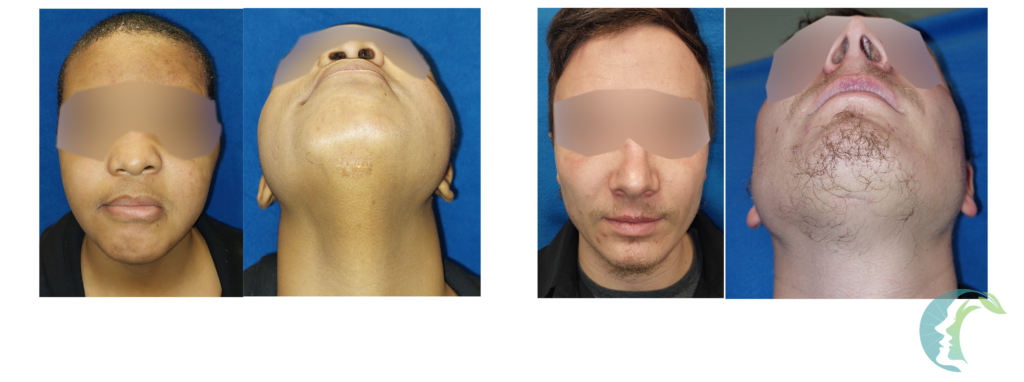
Indications for Submental Intubation
This technique is particularly useful for patients with:
- Midface and upper face trauma without a mandibular fracture, where nasotracheal intubation is contraindicated due to fractures involving the bilateral medial buttresses (e.g., bilateral Le Fort fractures).
- Concerns about visible tracheostomy scars.
Contraindications for Submental Intubation
This technique is not recommended for patients with:
- Mandibular fractures with significant edema along the floor of the mouth, anterior tongue, or anterior neck.
- Poor pulmonary reserves — The procedure introduces an unstable airway condition during critical transitions, posing a risk of losing the airway entirely, requiring re-establishment. As such, it is not ideal for critically ill patients. In such situations, tracheostomy may be a safer alternative.
- Patients requiring long-term tracheostomy — For patients needing prolonged ventilatory support, tracheostomy is a safer postoperative option for airway management. Submental intubation is not suitable for long-term postoperative use.
Equipment and Preparation
An armored endotracheal tube is used in this procedure to reduce the risk of kinking, a common issue with standard endotracheal tubes.
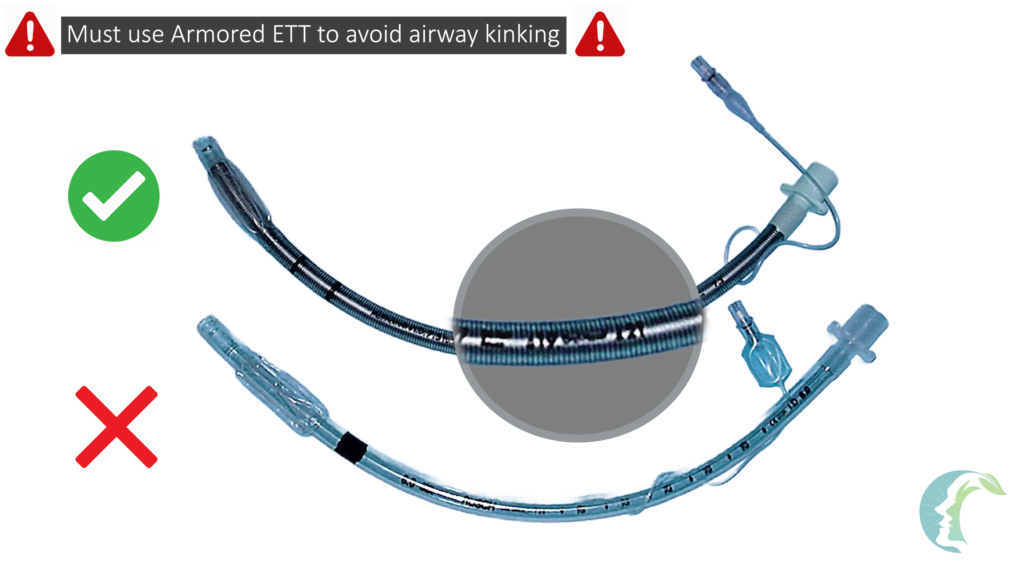
Procedure Steps
- Preparation of the Armored Tube: If the adapter of the armored endotracheal tube does not detach easily, cut the adapter to facilitate reattachment later. This modification ensures the ETT will fit through the soft tissue tunnel.
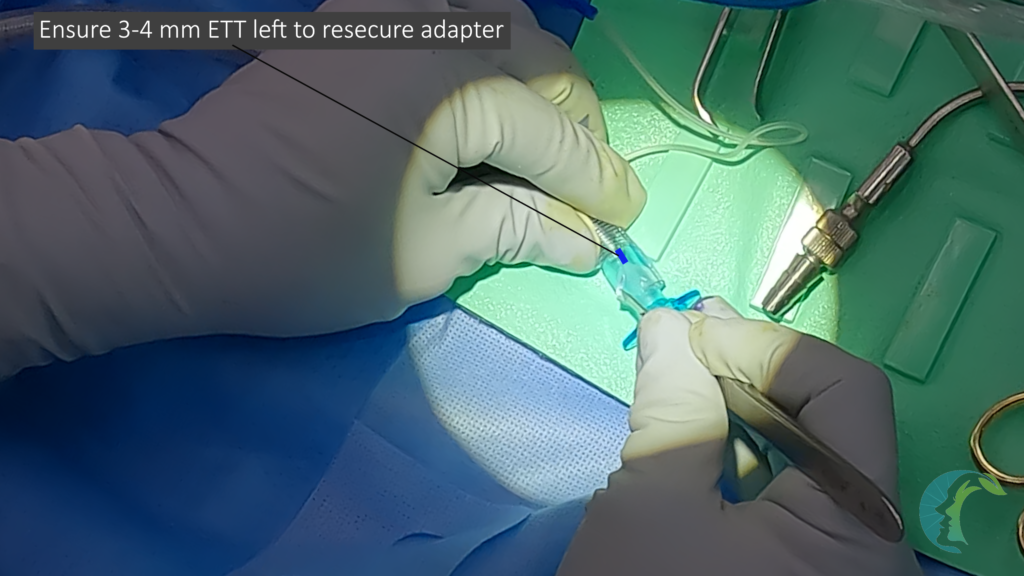
- Oral Intubation: Begin by orally intubating the patient with the modified armored endotracheal tube.
- Mucosal Incision: After successful intubation, identify the midline of the patient’s mandible. Locate the submandibular duct openings along the midline floor of the mouth. Make a mucosal incision anterior to the submandibular ducts along the lingual aspect of the midline mandible. Ideally, leave around 1 mm of mucosal cuff along the lingual mandible for closure.
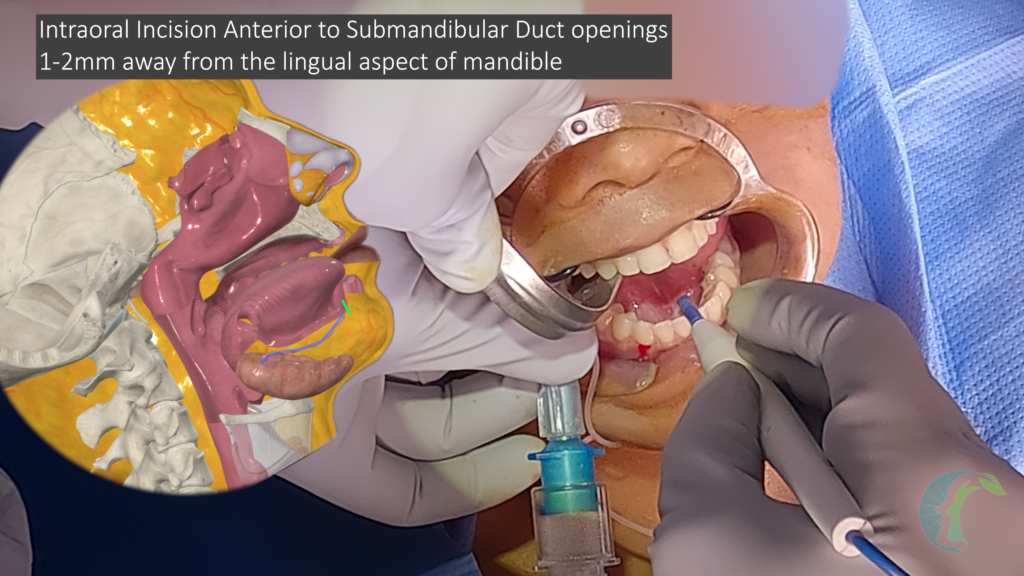
- Skin Incision Technique: Mark a 2-2.5 cm midline skin incision in the submental region, just posterior to the central mandible. Make the incision through the skin and subcutaneous tissue, moving down to the mandible. Use digital palpation to verify the midline position and avoid injury to the marginal mandibular nerve.

- Widening the Incision: Once you reach the bone, use #9 elevator to identify subperiosteal tissue plane along the lingual aspect of the central mandible. Connect from the inferior neck skin to intraoral incision. Next, widen the tract with a blunt-tip instrument. This creates adequate space for the endotracheal tube to pass through.
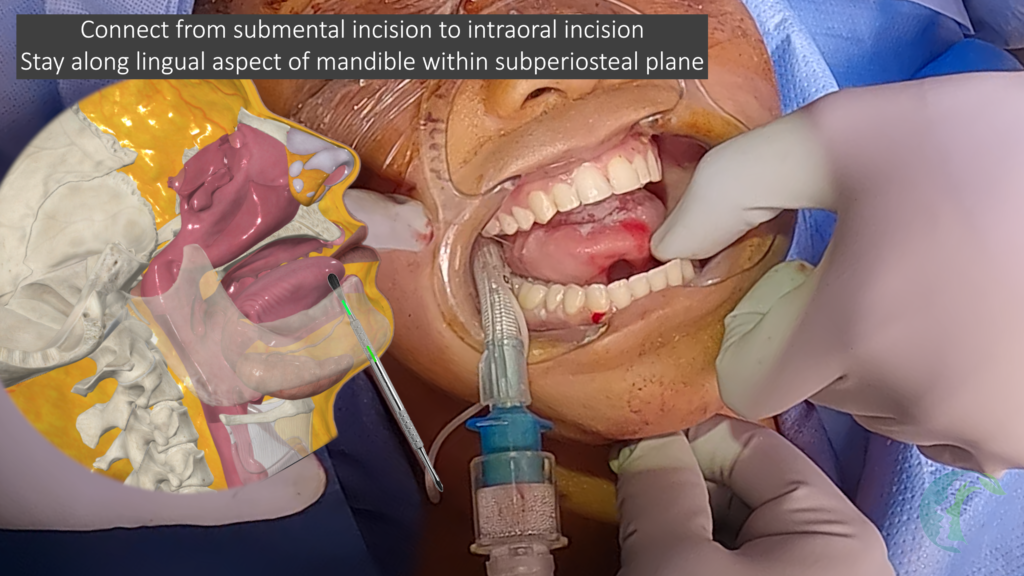
- Tube Delivery & Oxygen Administration: Have an assistant hold the ETT with an Allis Clamp to avoid dislodging the tube. It is crucial to note that this step marks the transition from a stable to an unstable airway. Temporarily increase FiO2 to boost pulmonary reserves.
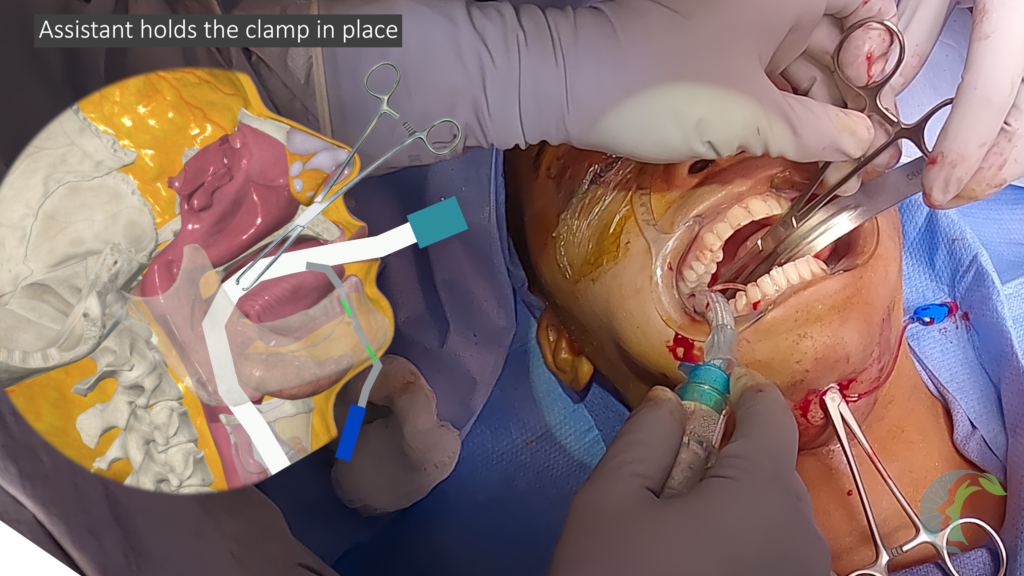
- Deliver the Tube: Deliver the cuff of the endotracheal tube through the skin incision first, followed by advancing the tube itself through the created tunnel.
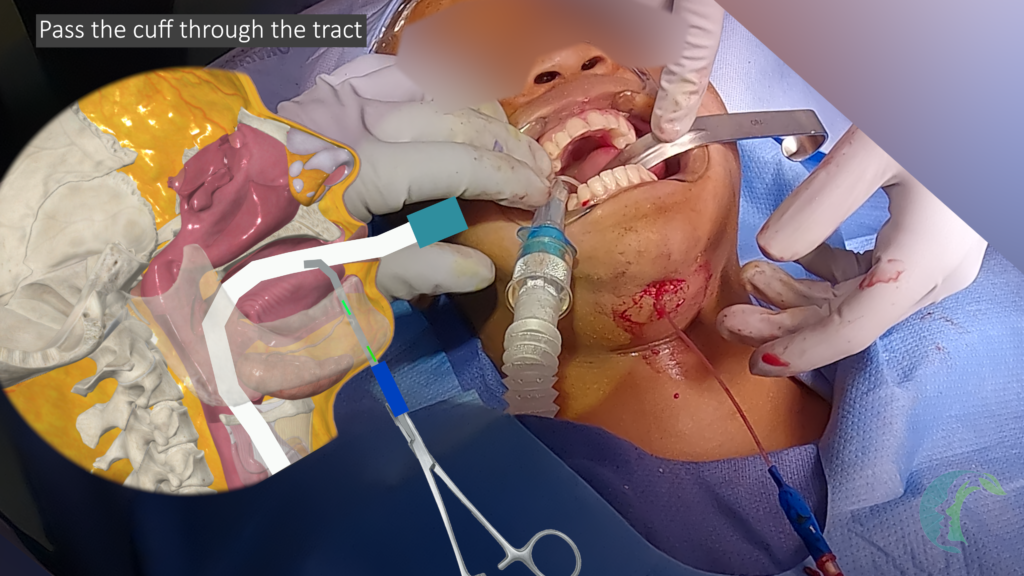
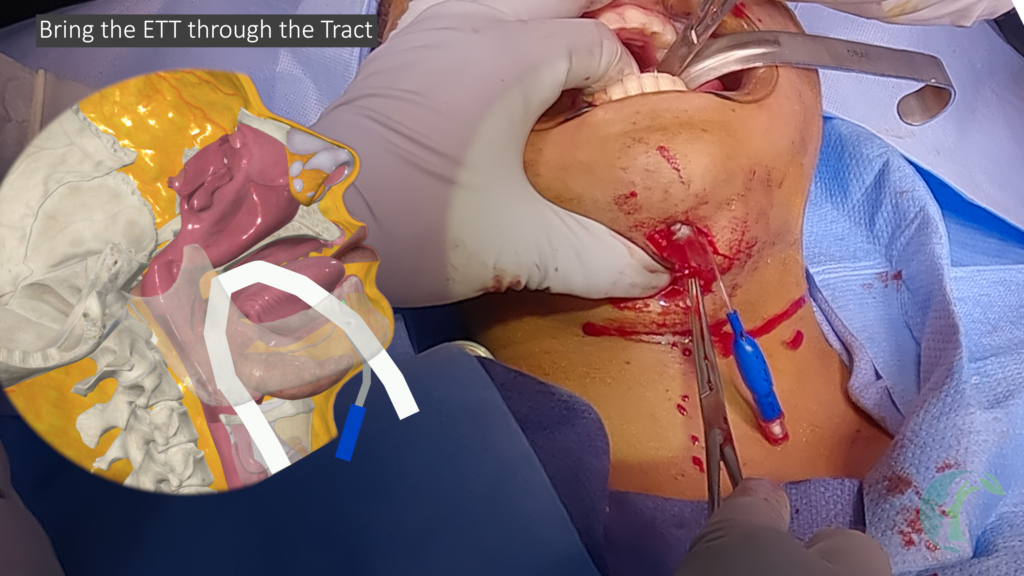
- Securing the Tube: After successfully passing the tube through the floor of the mouth and the submental incision, reattach the previously modified adapter. Secure the tube using sutures.
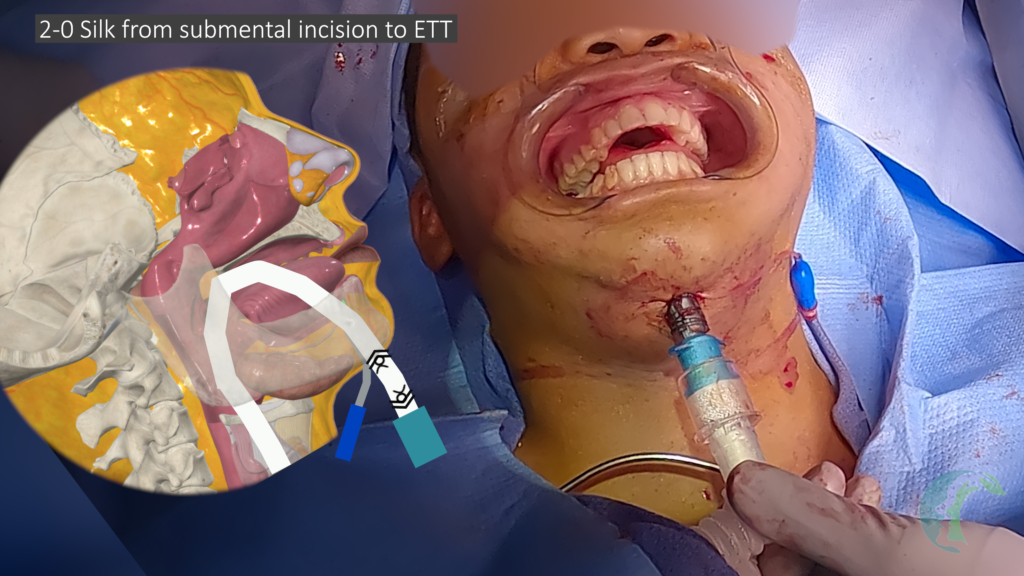
Post-Procedure Care
Once the procedure is complete, the tube can be safely tunneled back through the mouth, enabling the successful extubation of the patient. Intraoral and skin incisions are closed with sutures.
Conclusion
In summary, submental intubation is a valuable technique for managing airway access in patients with significant maxillofacial injuries. By following the outlined steps and maintaining clear communication throughout the procedure, you can enhance patient safety and optimize outcomes. Always evaluate the appropriateness of this technique based on the specific circumstances of each patient, ensuring contraindications are carefully considered.
By adhering to the principles and techniques detailed in this guide, healthcare providers can confidently perform submental intubation, providing essential respiratory support when traditional methods are not feasible. Always prioritize patient safety and proper technique to minimize risks and promote effective airway management.










